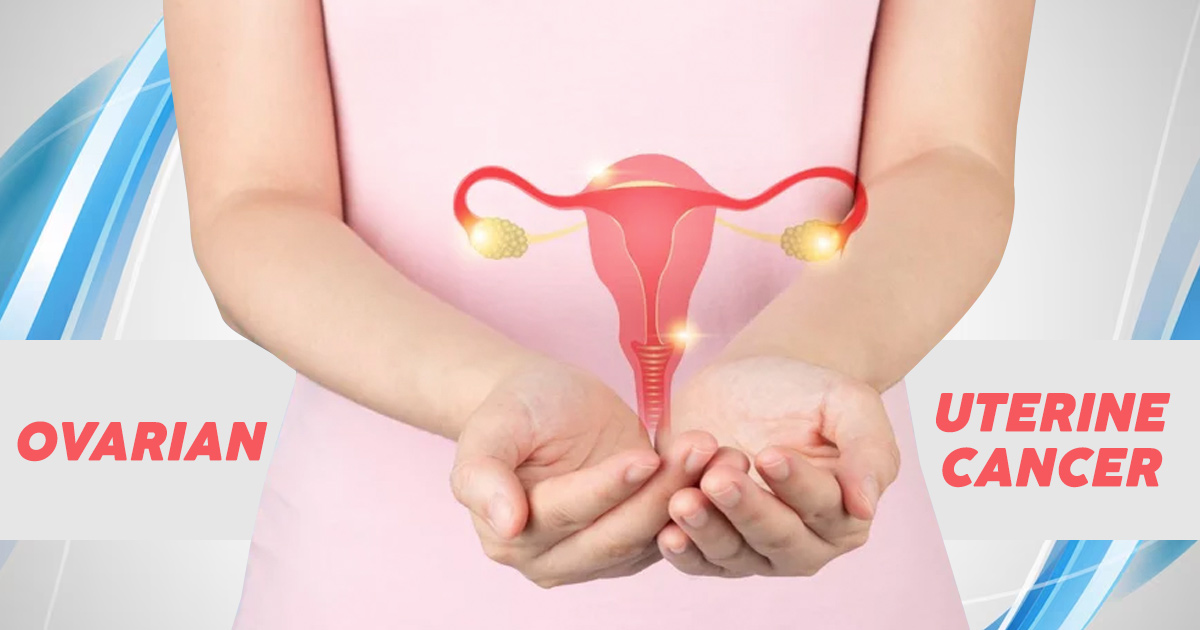Ovarian vs. Uterine Cancer: Symptoms, Survival Rates, & Treatment Options

Gynecologic cancers affect the female reproductive system and remain a serious health concern for women worldwide. These cancers, which include several types, account for over 1.4 million new cases and more than 680,000 deaths globally each year. They not only impact physical health but can also take an emotional and social toll. Among them, ovarian and uterine cancers are two of the most commonly discussed due to their unique challenges and impact on women’s health.
What Are Ovarian and Uterine Cancers?
Ovarian cancer starts in the ovaries, the small organs in the pelvis responsible for producing eggs and key hormones like estrogen and progesterone. Its symptoms are often subtle, making it difficult to detect early on. On the other hand, uterine cancer, also known as endometrial cancer, develops in the lining of the uterus (endometrium), where abnormal cell growth leads to cancerous changes.
Both cancers are distinct in how they present symptoms and are diagnosed. Notably, uterine cancer may also refer to less common types like uterine sarcoma, but most cases involve the endometrium. Below are the typical symptoms associated with each:
Uterine Cancer Symptoms
- Abnormal vaginal bleeding, especially after menopause.
- Pelvic pain or pressure.
- Painful urination or intercourse.
Ovarian Cancer Symptoms
- Persistent bloating or swelling in the abdomen.
- Feeling full quickly or loss of appetite.
- Frequent or urgent need to urinate.
- Unexplained weight loss and fatigue.
Now that we’ve outlined what these cancers are and their symptoms, let’s explore how they differ in terms of risk, treatment, and long-term challenges.
1. Which Is More Deadly?
Research indicates that ovarian cancer is deadlier, mainly due to its late detection. Identifying the disease early is rare because its symptoms are vague and easy to miss.
- Ovarian cancer has a five-year survival rate of around 50.8%, as most cases are diagnosed in advanced stages.
- Uterine cancer, in comparison, offers better odds with a survival rate closer to 81%, as it’s often detected earlier, typically due to noticeable symptoms like abnormal bleeding.
Ovarian cancer poses a greater risk in terms of mortality because it often remains undiagnosed until it has progressed to later stages.
2. Risk Factors
Each cancer has distinct risk factors, but they share some commonalities:
Uterine Cancer Risks
- Hormone imbalances, such as prolonged estrogen exposure without progesterone.
- Obesity, which increases estrogen levels in the body.
- Family history of uterine or colon cancer.
Ovarian Cancer Risks
- Genetic mutations like BRCA1 and BRCA2 greatly elevate risk.
- Family history of ovarian or breast cancer.
- Certain ethnic backgrounds, like Ashkenazi Jewish descent, carry higher genetic risks.
Shared risks include age, menopause, and never having been pregnant, which can increase the likelihood of developing both cancers.
3. Diagnosis Challenges
Detecting uterine cancer is often more straightforward than diagnosing ovarian cancer.
Uterine Cancer Diagnosis
- Early symptoms, notably abnormal bleeding, often prompt testing like ultrasounds and endometrial biopsies, leading to faster diagnosis.
Ovarian Cancer Diagnosis
- Ovarian cancer lacks routine screening tests. Although CA-125 blood tests and imaging scans may assist, they are typically done only after symptoms appear, which delays detection.
The key takeaway is that ovarian cancer is more difficult to detect in its early stages than uterine cancer, which improves treatment success.
4. Treatment Approaches
Both types of cancer share some treatment options but differ in how aggressive treatments need to be.
Similarities
- Surgery is the primary treatment for both, often involving the removal of the affected organs (hysterectomy or oophorectomy).
- Chemotherapy is a common follow-up treatment for advanced stages.
Ovarian Cancer Treatments
- Typically requires more aggressive therapies, including targeted treatments for late-stage cases.
Uterine Cancer Treatments
- Localized treatments like hormone therapy or radiation are often effective for early-stage uterine cancer, contributing to its higher survival rates.
5. Rates of Survival
Statistics from the National Cancer Institute and American Cancer Society highlight the stark difference in survival rates for early vs. advanced stages:
- Uterine cancer diagnosed early (localized): 94.8% survival rate
- Ovarian cancer diagnosed early (localized): 93% survival rate
- Ovarian cancer survival drops drastically as it spreads (distant stage): 31%
Early detection significantly boosts survival for both, but ovarian cancer remains more dangerous when caught late.
6. Which Is Worse Over Time?
Ovarian cancer continues to be more life-threatening due to high mortality rates and late diagnoses. However, uterine cancer has also been concerning in recent years, with mortality rates rising, often linked to factors like obesity and healthcare disparities. For example, Black women experience higher death rates from uterine cancer despite its overall treatability.
Although ovarian cancer is deadlier, uterine cancer trends point to significant health inequities and risks that need attention.
Navigating the Paths to Early Detection and Better Outcomes
Both ovarian and uterine cancers present unique challenges and risks, but they differ in how they affect women’s health. Ovarian cancer is more lethal, primarily because it’s harder to detect early. Meanwhile, uterine cancer remains more treatable, though unequal access to care and rising rates make it a growing concern.
To protect yourself, stay informed, pay attention to unusual symptoms like bloating, pelvic pain, or abnormal bleeding, and seek timely medical advice. Early detection and proactive healthcare are key to reducing the impact of both ovarian and uterine cancers.
